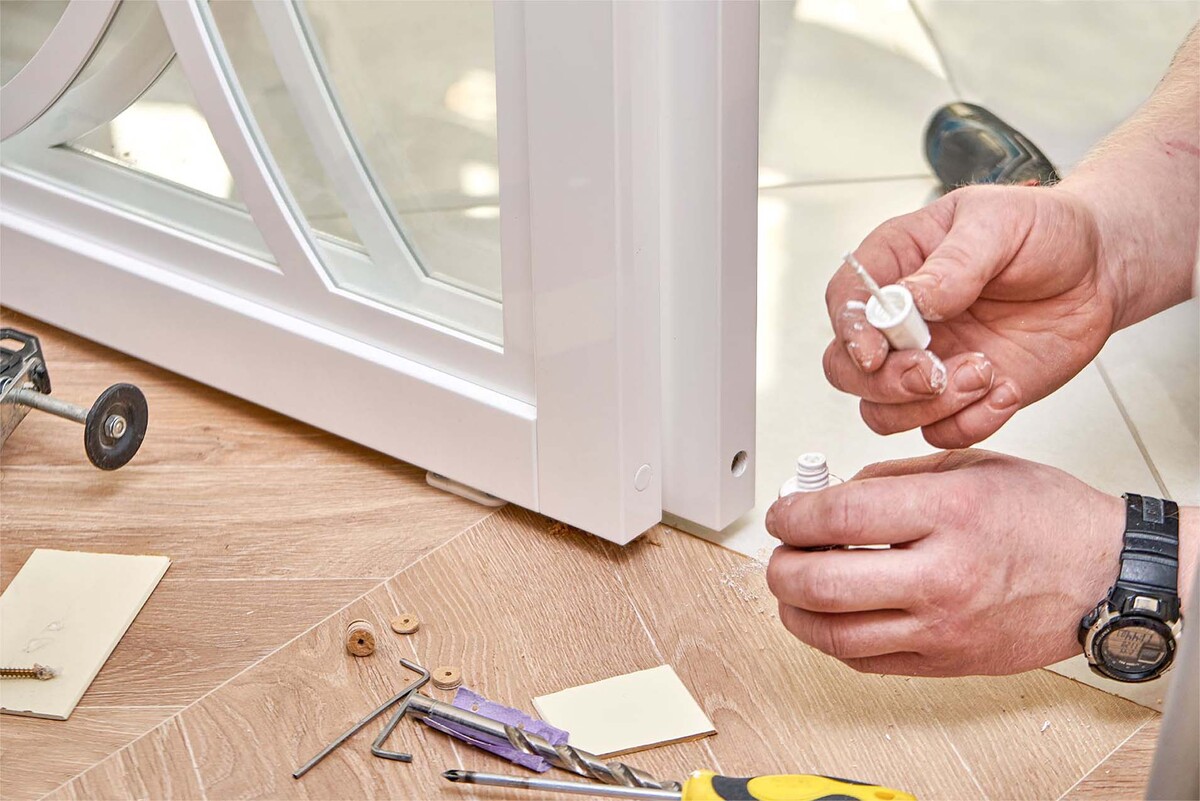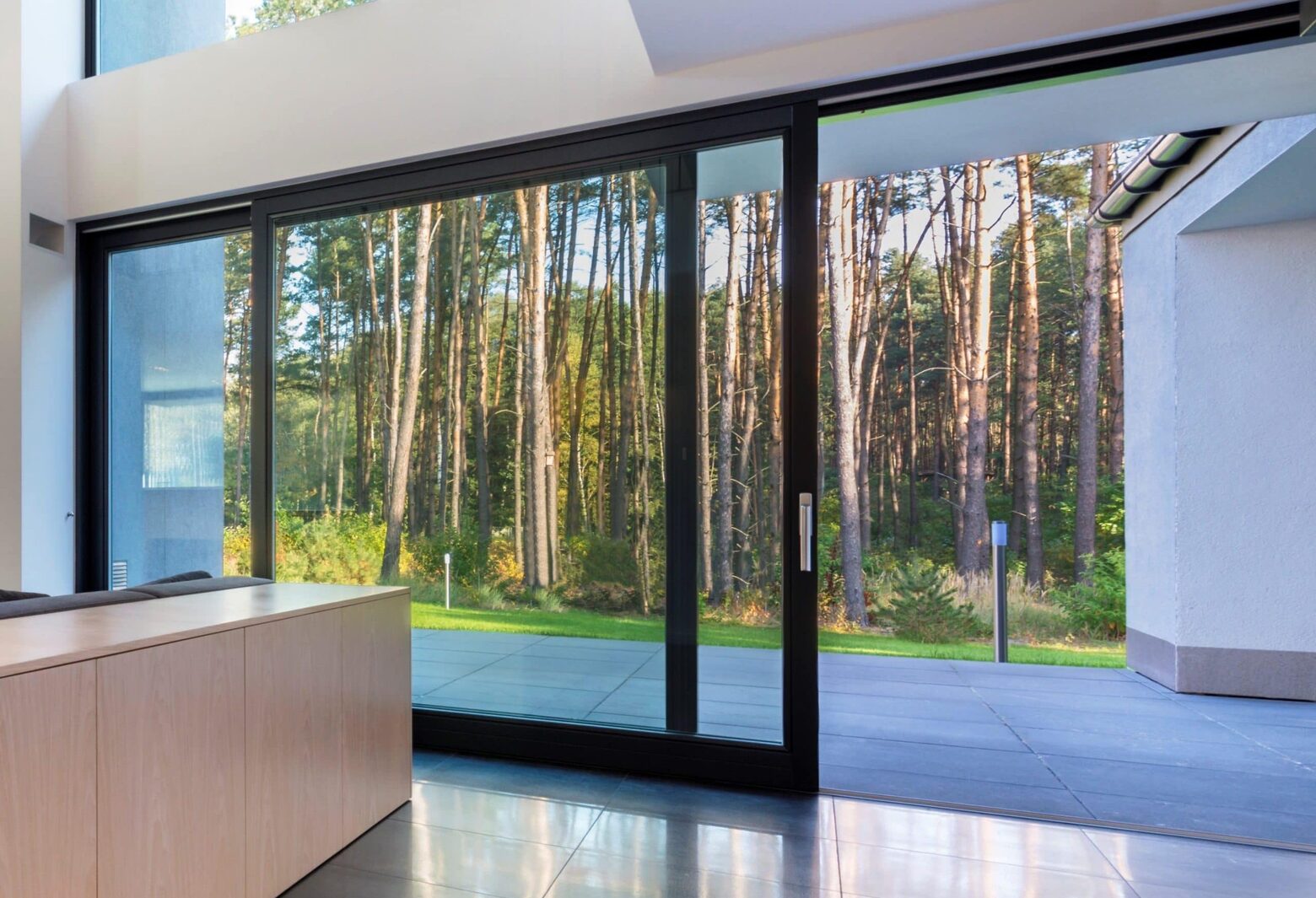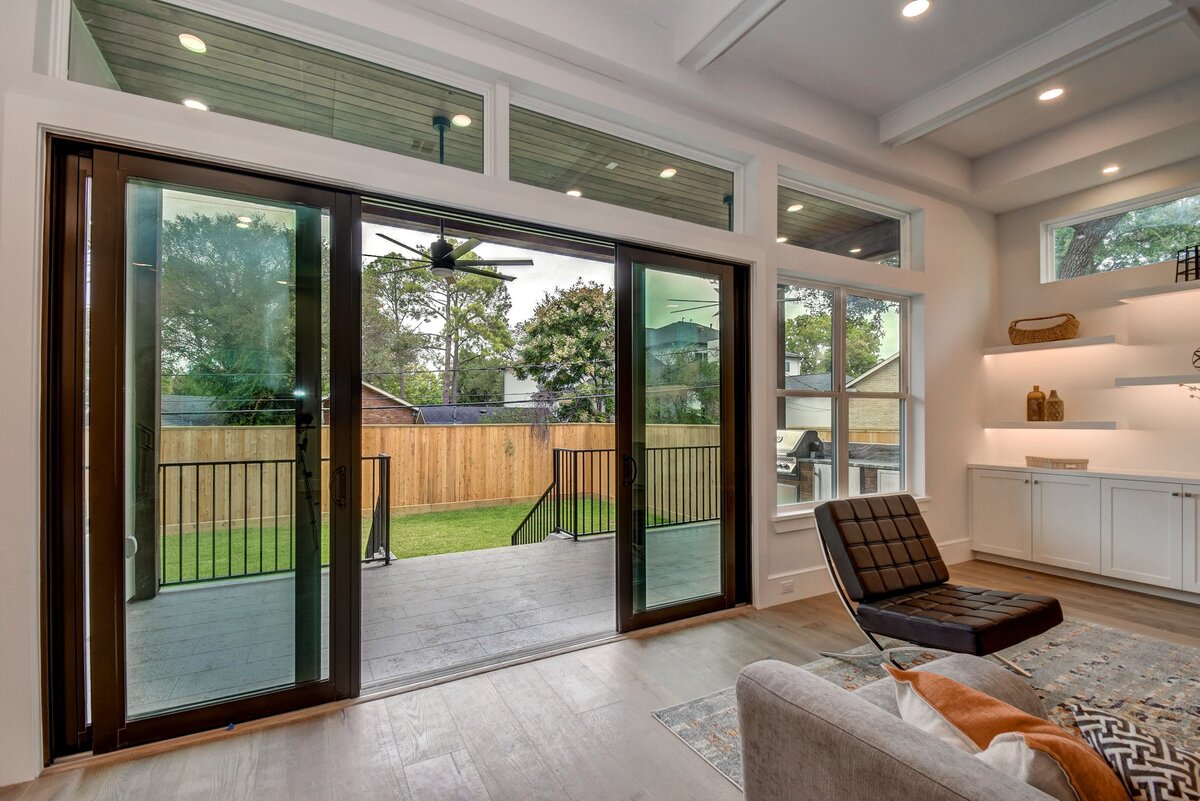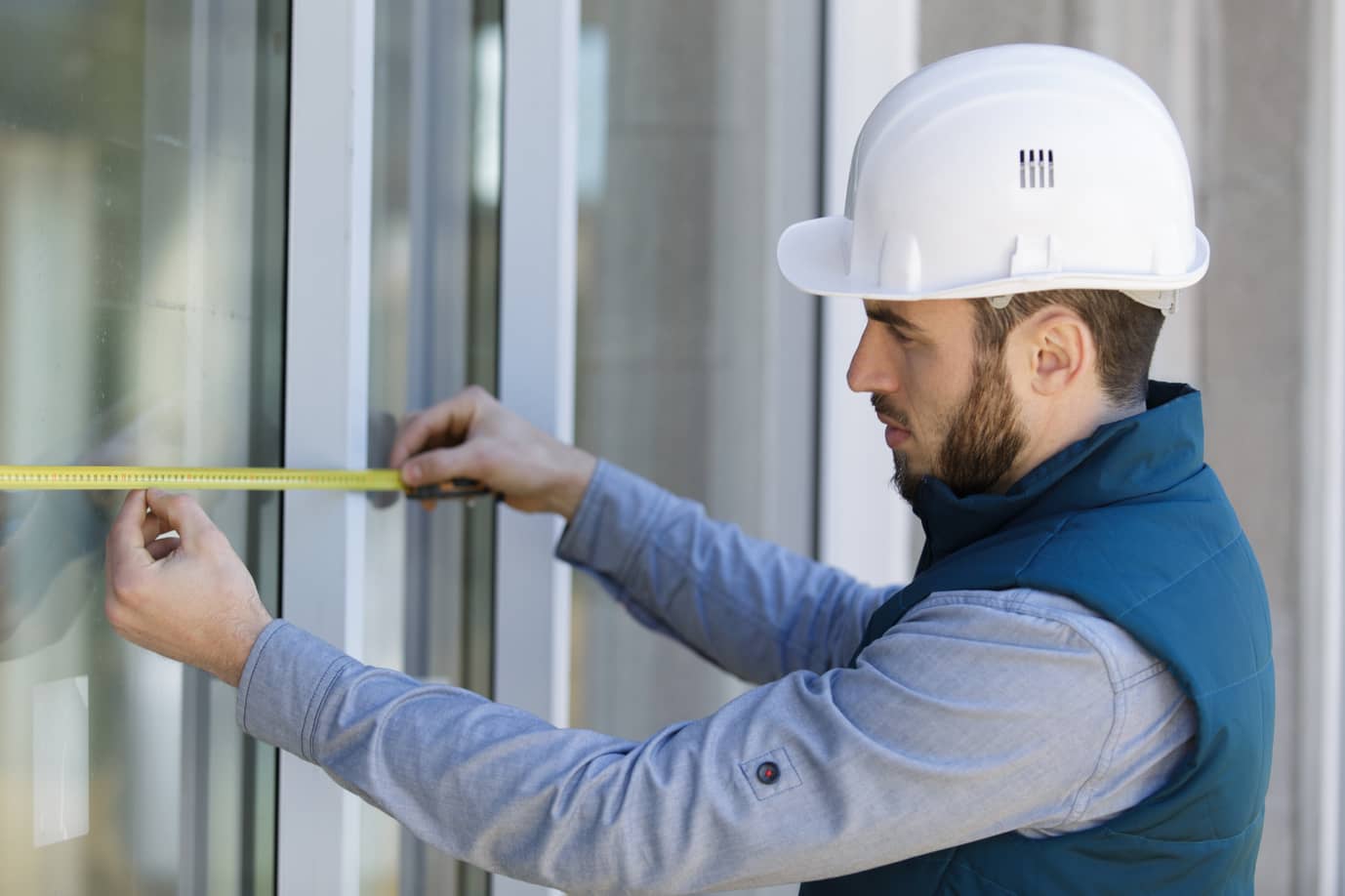Home>Furniture & Design>Interior Design Trends>How Long Is A Sliding Glass Door


Interior Design Trends
How Long Is A Sliding Glass Door
Modified: August 27, 2024
Discover the latest interior design trends for sliding glass doors and learn about their ideal length for a stylish and functional space. Explore innovative ideas for incorporating sliding glass doors into your home.
(Many of the links in this article redirect to a specific reviewed product. Your purchase of these products through affiliate links helps to generate commission for Storables.com, at no extra cost. Learn more)
Introduction
Sliding glass doors have become an integral part of modern architectural design, seamlessly blending indoor and outdoor spaces while allowing natural light to flood into the interior. These versatile doors not only enhance the aesthetic appeal of a space but also offer functional benefits such as improved ventilation and easy access to outdoor areas.
Understanding the dimensions of sliding glass doors is crucial for homeowners, architects, and interior designers alike. The length of a sliding glass door plays a pivotal role in determining its suitability for a particular space and its ability to create a seamless transition between indoor and outdoor living areas.
In this comprehensive guide, we will delve into the various aspects of sliding glass door lengths, including standard sizes, custom options, and the factors that influence the dimensions of these doors. Whether you are embarking on a home renovation project or seeking to incorporate sliding glass doors into a new construction, this exploration will provide valuable insights into the diverse dimensions available and the considerations to keep in mind when determining the ideal length for your specific requirements.
Join us as we unravel the intricacies of sliding glass door lengths, empowering you to make informed decisions and unlock the full potential of these elegant and functional architectural elements.
Key Takeaways:
- Sliding glass doors come in standard sizes, but can also be customized to fit unique spaces. Consider architectural design, structural constraints, and personal preferences when choosing the length for a seamless integration.
- The length of sliding glass doors impacts natural light, traffic flow, and visual aesthetics. Balancing these factors is crucial for creating a harmonious and functional architectural installation.
Read more: How Long Are Sliding Glass Doors
Standard Sizes of Sliding Glass Doors
Sliding glass doors are available in a range of standard sizes to accommodate various architectural designs and spatial requirements. These standard dimensions are widely used in residential and commercial settings, offering a convenient starting point for those seeking to integrate sliding glass doors into their spaces. Understanding these standard sizes is essential for anyone considering the installation or replacement of sliding glass doors.
Common Widths
Standard sliding glass door widths typically range from 60 inches to 72 inches. The 60-inch width is a popular choice for smaller openings, such as those leading to patios or balconies, while the 72-inch width is commonly used for larger openings, providing a more expansive view and enhanced access to outdoor areas. These widths are well-suited for most residential applications, offering versatility and functionality.
Height Variations
In terms of height, standard sliding glass doors are commonly available in heights of 80 inches and 96 inches. The 80-inch height is a prevalent choice for standard door openings, while the 96-inch height is often utilized for taller or grander spaces, allowing for a more dramatic and imposing architectural statement. The availability of these height variations ensures that sliding glass doors can be seamlessly integrated into diverse interior and exterior settings.
Considerations for Standard Sizes
When selecting a standard size for a sliding glass door, it is crucial to consider the specific requirements of the space. Factors such as the architectural style, the desired level of natural light, and the functional purpose of the door should all be taken into account. Additionally, the standard sizes available in the market can influence the overall aesthetic and practicality of the installation, making it essential to carefully evaluate the dimensions that best align with the intended design and usage.
Flexibility and Adaptability
While standard sizes provide a convenient starting point, it is important to note that flexibility and adaptability are key attributes of sliding glass doors. Many manufacturers offer customization options that allow for slight adjustments to the standard dimensions, enabling a tailored fit for unique architectural configurations. This flexibility ensures that sliding glass doors can be seamlessly integrated into a wide range of spaces, regardless of their specific size requirements.
In summary, the standard sizes of sliding glass doors encompass a range of widths and heights, catering to diverse architectural and spatial needs. These dimensions serve as a practical foundation for incorporating sliding glass doors into residential and commercial settings, offering versatility and functionality. By understanding the standard sizes available and considering the specific requirements of the space, individuals can make informed decisions when selecting sliding glass doors that align with their design vision and practical objectives.
Custom Sizes of Sliding Glass Doors
Custom sizes of sliding glass doors offer a tailored solution for spaces that deviate from standard architectural dimensions or require specialized configurations. These bespoke dimensions empower homeowners, architects, and interior designers to seamlessly integrate sliding glass doors into unique settings, ensuring a precise fit and optimal functionality.
When standard sizes do not align with the specific requirements of a space, custom-sized sliding glass doors become indispensable. Whether it's a non-standard opening width or an unconventional ceiling height, custom dimensions enable the creation of a harmonious and cohesive architectural composition. This level of customization is particularly valuable in renovation projects where existing structural constraints may necessitate non-standard door sizes.
The process of obtaining custom-sized sliding glass doors typically involves collaborating with experienced manufacturers or suppliers who specialize in bespoke architectural elements. By leveraging their expertise, it becomes possible to translate the unique spatial parameters into meticulously crafted sliding glass doors that seamlessly integrate with the surrounding architecture.
Custom sizes also extend beyond mere width and height adjustments. They encompass a spectrum of design options, including multi-panel configurations, asymmetrical divisions, and specialized framing solutions. These variations cater to diverse design preferences and functional requirements, allowing for the creation of truly personalized and distinctive architectural statements.
In addition to accommodating non-standard architectural dimensions, custom-sized sliding glass doors offer the opportunity to infuse the space with a sense of individuality and character. By tailoring the dimensions to align with the overall design vision, these doors become integral elements of the architectural narrative, contributing to the aesthetic cohesion and spatial harmony of the environment.
Furthermore, custom-sized sliding glass doors can be tailored to enhance specific functional aspects, such as optimizing natural light ingress, facilitating seamless indoor-outdoor transitions, and accommodating accessibility needs. This level of customization ensures that the doors not only align with the visual and spatial requirements but also deliver practical benefits that enhance the overall living experience.
In essence, custom sizes of sliding glass doors represent a realm of limitless possibilities, where architectural vision and spatial pragmatism converge. By embracing custom dimensions, individuals can transcend the constraints of standard sizes and embark on a journey of tailored architectural integration, where every aspect of the sliding glass doors reflects a meticulous alignment with the unique characteristics of the space.
Factors Affecting the Length of Sliding Glass Doors
The length of sliding glass doors is influenced by a myriad of factors, each playing a crucial role in determining the optimal dimensions for a particular space. Understanding these factors is essential for achieving a harmonious integration of sliding glass doors within the architectural context while addressing functional and aesthetic considerations.
Architectural Design and Spatial Layout
The architectural design of a space significantly impacts the length of sliding glass doors. Open floor plans with expansive vistas may call for wider doors to maximize the visual connection between indoor and outdoor areas. Conversely, smaller rooms or more intimate settings may benefit from narrower doors that maintain a sense of proportion and balance within the overall spatial layout.
Read more: How To Lube A Sliding Glass Door
Structural Constraints and Building Codes
Structural considerations and building codes play a pivotal role in determining the permissible dimensions of sliding glass doors. Load-bearing requirements, wind resistance, and seismic considerations can influence the maximum width and height of the doors, ensuring structural integrity and compliance with safety regulations. Adhering to these constraints is essential for the long-term durability and safety of the architectural installation.
Functional Purpose and Traffic Flow
The intended function of the sliding glass doors directly impacts their length. Doors serving as primary access points to outdoor living spaces or as prominent architectural features may warrant wider dimensions to accommodate smooth traffic flow and facilitate seamless transitions. In contrast, doors designated for specific areas within the interior, such as bedroom balconies or private courtyards, may benefit from more modest dimensions that cater to their specific usage.
Natural Light and Energy Efficiency
The length of sliding glass doors also influences the ingress of natural light and the overall energy efficiency of a space. Larger doors can maximize daylight exposure, fostering a bright and inviting interior environment. However, it is essential to strike a balance between natural light optimization and thermal performance, ensuring that the doors contribute to a comfortable and sustainable living environment.
Visual Aesthetics and Design Cohesion
From a design perspective, the length of sliding glass doors plays a pivotal role in shaping the visual aesthetics and design cohesion of a space. Harmonizing the dimensions of the doors with the surrounding architectural elements, such as windows, ceilings, and structural lines, is essential for creating a cohesive and visually appealing composition. The length of the doors can accentuate architectural features, establish visual symmetry, and contribute to the overall design narrative.
Read more: How To Childproof A Sliding Glass Door
Personal Preferences and Lifestyle Considerations
Ultimately, personal preferences and lifestyle considerations influence the length of sliding glass doors. Individual design sensibilities, spatial preferences, and lifestyle dynamics all contribute to the decision-making process, shaping the dimensions of the doors to align with the unique needs and aspirations of the occupants. Tailoring the length of the doors to reflect these personal elements ensures that the architectural installation becomes a true reflection of the inhabitants' lifestyle and design ethos.
In summary, the length of sliding glass doors is a multifaceted consideration, encompassing architectural, functional, aesthetic, and personal dimensions. By carefully evaluating these factors, individuals can determine the optimal length for sliding glass doors, ensuring a seamless integration within the architectural context while addressing practical and visual requirements.
Conclusion
In conclusion, the length of sliding glass doors is a critical aspect of architectural design, influencing both the aesthetic appeal and functional performance of a space. Whether considering standard sizes or opting for custom dimensions, the process of determining the ideal length involves a nuanced evaluation of various factors, including architectural design, spatial layout, structural constraints, and personal preferences.
Standard sizes offer a practical starting point, providing a range of widths and heights that cater to diverse architectural and spatial needs. These dimensions, commonly available in the market, offer versatility and functionality, allowing for seamless integration into residential and commercial settings. However, the flexibility and adaptability of sliding glass doors extend beyond standard sizes, with custom dimensions offering tailored solutions for unique architectural configurations. Custom-sized doors not only accommodate non-standard openings but also enable personalized design options, infusing the space with a sense of individuality and character.
The length of sliding glass doors is influenced by architectural design, structural constraints, functional purpose, natural light optimization, visual aesthetics, and personal lifestyle considerations. Balancing these factors is essential for achieving a harmonious integration of sliding glass doors within the architectural context while addressing practical and aesthetic requirements. By carefully evaluating these considerations, individuals can determine the optimal length for sliding glass doors, ensuring a seamless and purposeful architectural installation that aligns with their design vision and lifestyle dynamics.
Ultimately, the length of sliding glass doors transcends mere dimensions, embodying the convergence of architectural vision, spatial pragmatism, and personal expression. Whether seeking to create a seamless indoor-outdoor connection, maximize natural light ingress, or enhance the visual aesthetics of a space, the length of sliding glass doors serves as a pivotal element in shaping the overall architectural narrative. By embracing the diverse dimensions available and considering the multifaceted factors at play, individuals can unlock the full potential of sliding glass doors, transforming them into integral elements that elevate the living experience and architectural ambiance.
In essence, the length of sliding glass doors is not merely a numerical measurement but a reflection of the intricate interplay between design, functionality, and personalization, culminating in architectural elements that transcend mere utility to become defining features of the built environment.
Frequently Asked Questions about How Long Is A Sliding Glass Door
Was this page helpful?
At Storables.com, we guarantee accurate and reliable information. Our content, validated by Expert Board Contributors, is crafted following stringent Editorial Policies. We're committed to providing you with well-researched, expert-backed insights for all your informational needs.













0 thoughts on “How Long Is A Sliding Glass Door”